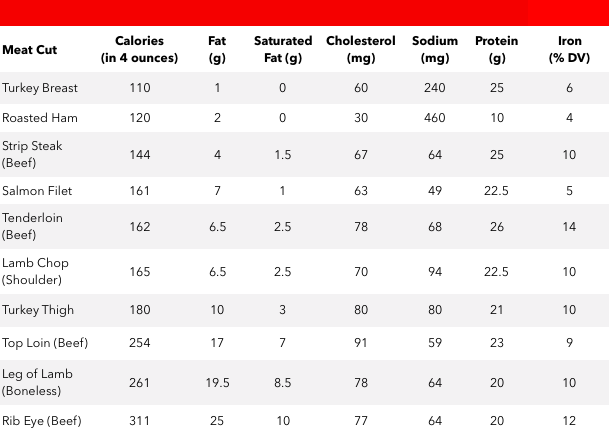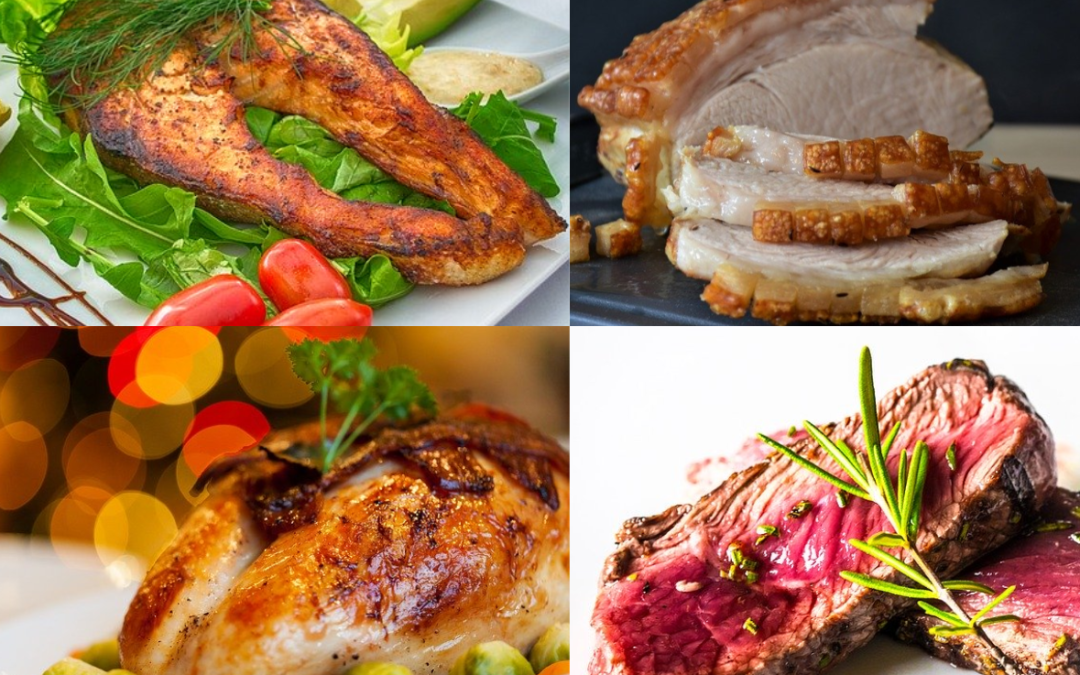As the holidays get into full swing, dishes like roasts and baked hams and turkeys all start appearing at festive gatherings with increased regularity. So, how can you navigate these meals while making healthful choices? Take a look at the comparison chart below to determine which meat (if you’re choosing a meat) is best for your plate.

You may notice that cut matters. While a strip steak and a rib eye both come from a cow, the strip steak is much leaner, lower in calories, and higher in protein. Cuts to eat in moderation include leg of lamb, rib eye, and top loin, while roast turkey breast, roast ham, and strip steak all come in much lower on the calorie scale.
However, calories aren’t everything. Roasted ham is packed with sodium, with 460 grams in a single 4-ounce serving. Top loin and turkey thighs are similarly loaded with cholesterol, much more than one would expect from their calorie totals.
Beef tenderloin is highest in protein, with turkey breast and strip steak right on its heels (so to speak), and that same cut is also highest in iron, with rib eye right on its heels.
So if you eat meat, take this information to make the most healthful choices at your next holiday gathering. And here are a few more tips for navigating the meat minefield at this time of year…
- Pay attention to portion sizes. A 3-ounce cooked portion is about the size of a deck of cards.
- Trim fat from meat and remove skin from poultry before eating.
- Bake, broil, microwave, poach or roast instead of frying.
- When you roast, place the meat on a rack so the fat can drip away.
- Use fat-free ingredients such as fruit juice, wine or defatted broth to baste meats and poultry.
- Fresh or frozen fish is often a good bet, and most Americans aren’t consuming enough fish in their daily eating patterns, so consider fish for the New Year.
A Note About Portion Size: The serving size for most meats, as set forth by MyPlate and the Dietary Guidelines for Americans, is 3 ounces, not the 4 ounces compared here. We recommend eating meat in 3 ounce servings, not 4 ounce servings, but since 4 ounces is what almost all manufacturer’s provided in their data, we used that information in the chart above.
Copyright foodandhealth.com, reprinted with permission.

